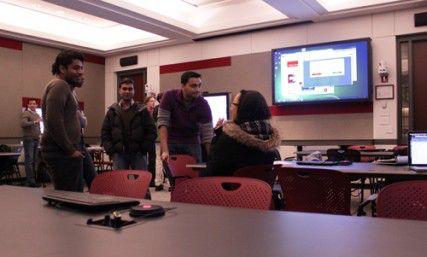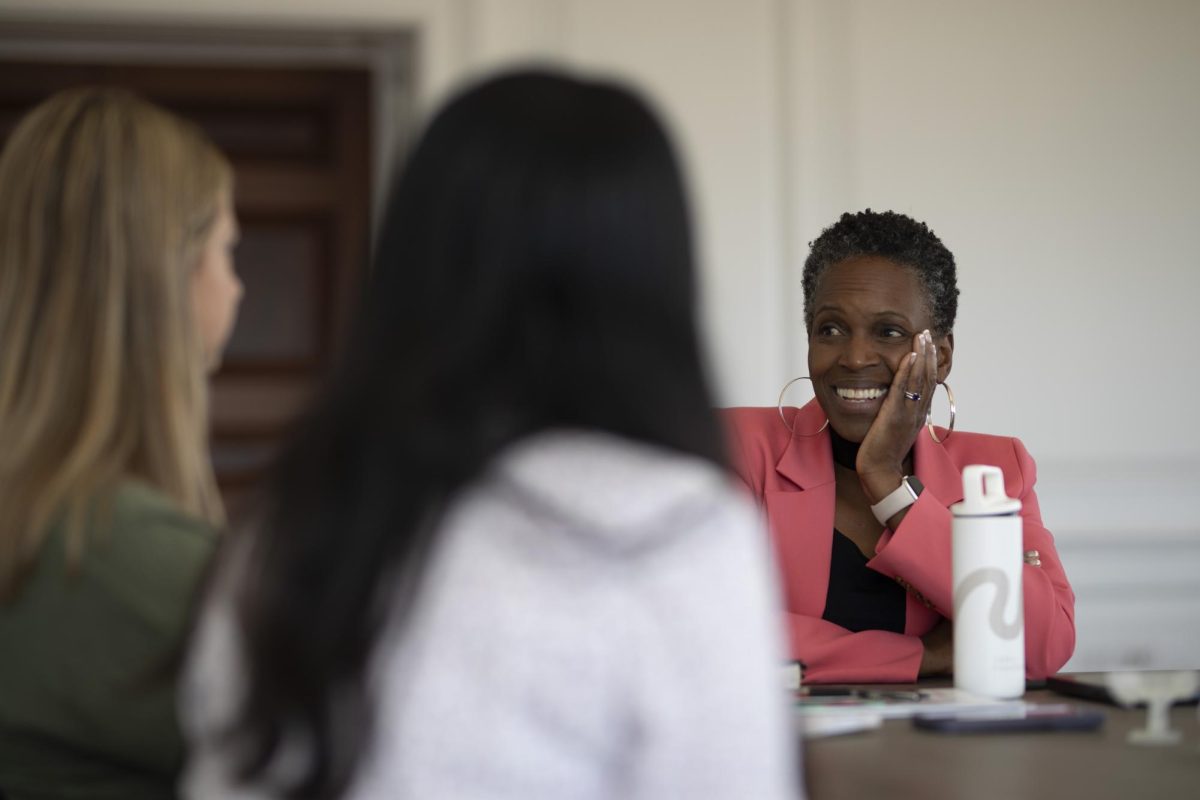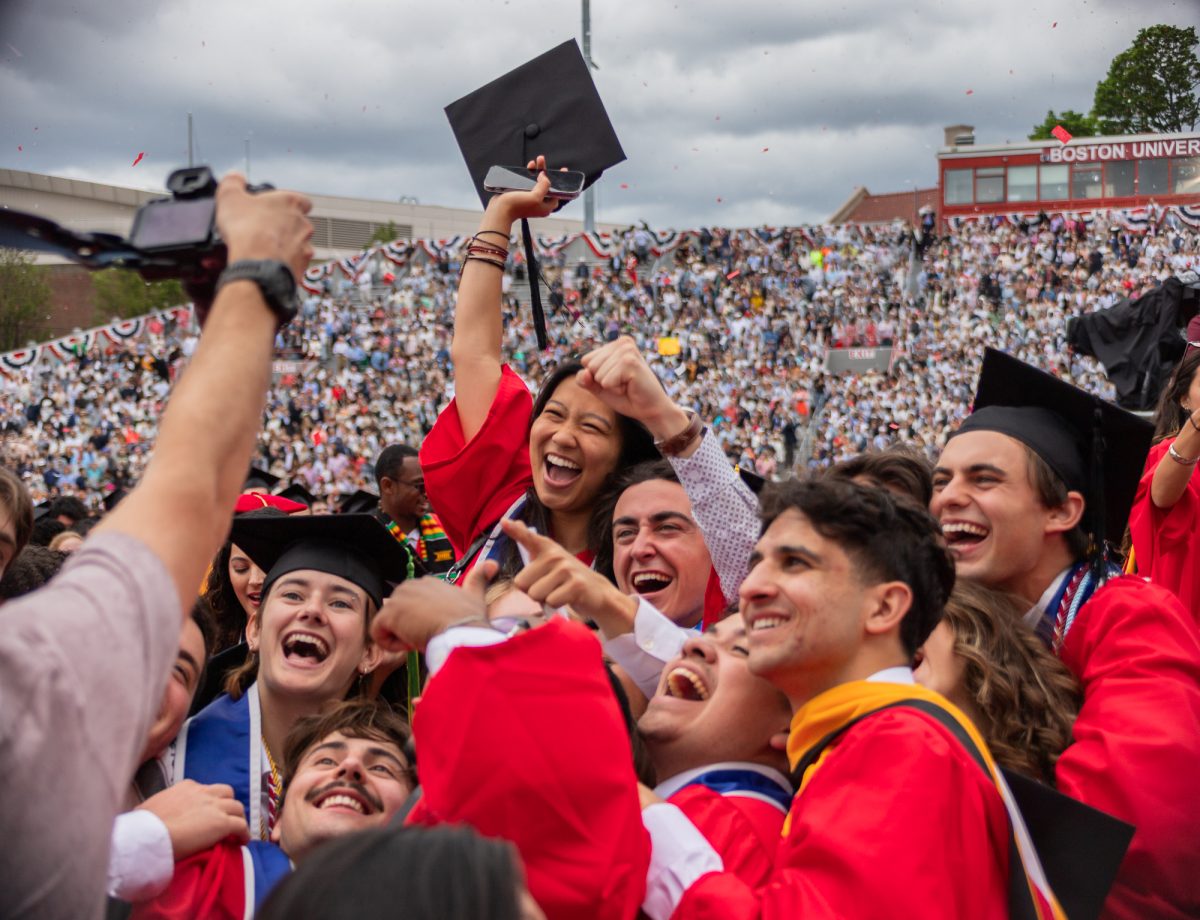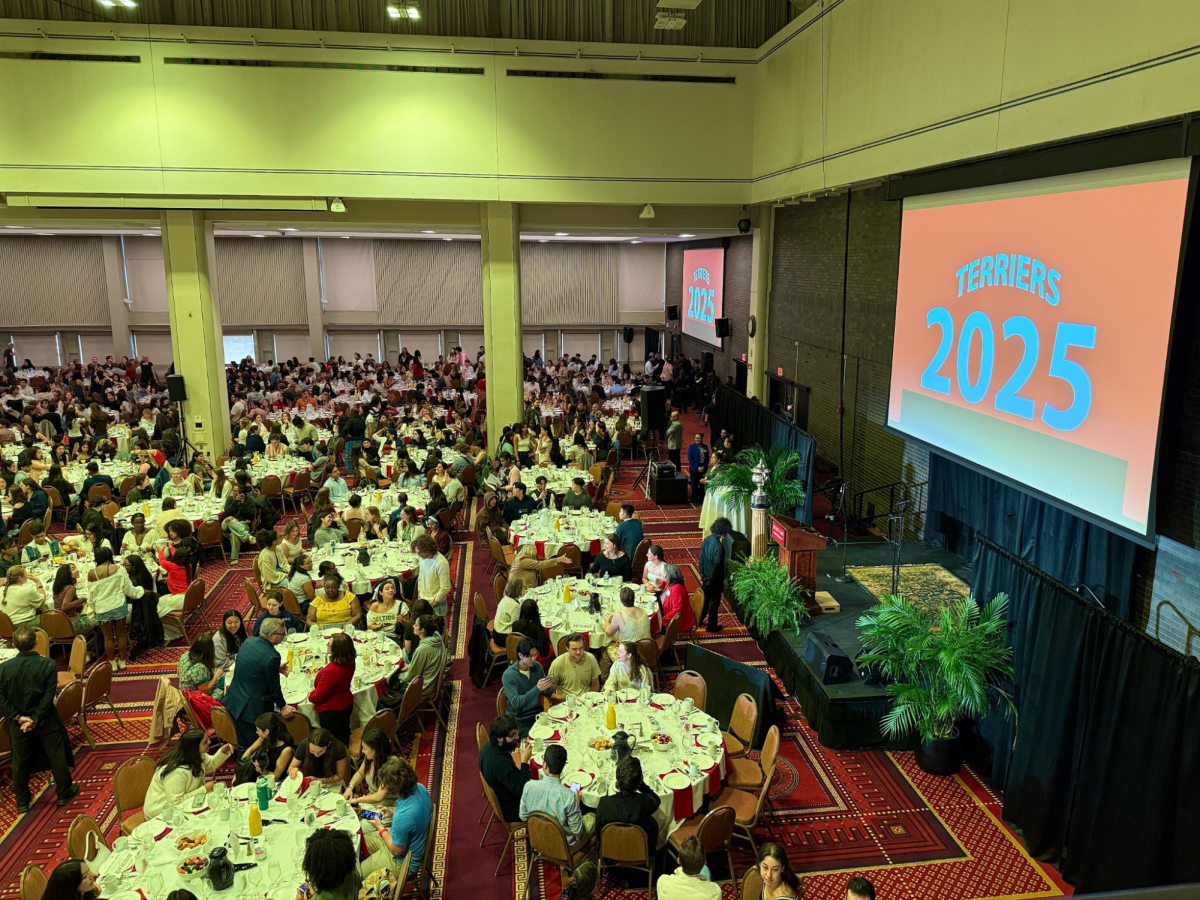
Boston University students expressed mixed reviews toward School of Management’s addition of “smart classrooms” aimed to improve instruction methods and test new interactive classroom technology.
Implemented for the Spring 2012 semester, the smart classrooms are serving as sub-rooms for The Dynamics of Leading Organizations, a sophomore core class that includes small discussion sections and student groups.
The rooms were created with money SMG received from Provost’s office through the Redesigning the Undergraduate Learning Experience grant, said Jack McCarthy, the professor teaching the course. The grant, sponsored by the BU Center for Excellence & Innovation in Teaching, supports more effective teaching and communication methods in large, lecture-style classrooms, according to the center’s website.
The lecture is held in the SMG auditorium, room 105, while the smart classrooms are held in SMG 326 and SMG 314, a computer lab. Each smart classroom has a professor who answers questions for the students.
One section of the course has been designated to a smart classroom for the entire semester and two other sections are rotating between sitting in the lecture hall and the second smart classroom.
Students in the smart classrooms have access to 30 flat, web-enabled monitors where they can watch the lecture with access to PowerPoints, videos and various applications, said Associate Dean John Chalykoff.
“The professor can work with students in small discussion sections instead of letting them be passive learners,” Chalykoff said in a phone interview with The Daily Free Press. “This is a more progressive and rich way for students to participate in lecture.”
At the end of the lecture, a professor in the smart classroom will debrief students, McCarthy said. Students also take surveys rating how satisfied they were with the lecture and teaching methods, which McCarthy said have been overwhelmingly positive.
Many students said while it was an attempted solution for overcrowding in the classroom, they preferred to seek other options, such as placing all students in a lecture hall that accommodates them.
Kaitlyn Ong, a SMG sophomore, spent the first lecture in one of the smart classrooms. The professor, she said, told the class more than 450 students had registered, making it one of the largest lectures, if not the largest, he has taught for the course.
“Personally, I prefer the lecture hall,” Ong said in a phone interview. “I feel like the presence of the lecture and professor keeps students engaged.”
Ong, however, said there are distractions with sitting in the lecture hall, such as people accessing Facebook during class and having to sit in the back of the class. She also has to arrive 30 minutes before class to secure a “good seat.”
Erin Lam, another student in the class, agreed that students have to arrive early to get a good seat and even when students show up early it’s difficult to find a seat and pay attention.
“I definitely feel like it’s too crowded,” Lam, a sophomore in SMG, said in a phone interview.
SMG sophomore Vivian Chao said the approach was for the better, since she had to sit in the corner of the lecture hall by the podium where she could not see what was happening.
“The two times I was in the lecture hall, I couldn’t see anything and people talked,” she said. “[With the TVs], you can see the lecture without distractions.”
McCarthy said he was enthusiastic about the new program and called the innovations a “richer” way of learning. He also notes the drawbacks, such as changing the way he lectures to use technology more effectively.
“We do not do distance learning,” McCarthy said. “The most important thing we’ve learned is that students need to be engaged in learning. Students can become passive and lose content in lecture, and we are trying to use a multifaceted approach based on multiple learning styles.”
Chao said the smart classrooms’ approach is a way to ensure students get the same classroom experience as everyone else in the class.
“I feel like with the lecture, we are paying a lot of money to be in that class, so I actually want to be able to hear the professor and see what’s going on,” she said.
Ong said she and her friends enjoy the personal TVs because they can follow along on their personal screens with their own space, but felt less secure about the school’s innovation.
“Sometimes, if the school is trying to be innovative, we end up the guinea pigs,” she said. “Sometimes you have these moments where you feel like you’re not getting what you paid for, but if outcome [the] is positive, you feel like you’re a part of it.”
Chao, however, said the technology allows students to experience the lecture in a more “intimate” way.
“We should use it,” Chao said. “Why should I miss out when everyone else can see?”























































































































